Chess: Best game of the week
- 08 February, 2021
- 06:19

When you hear the word “assumption”, a negative connotation may come to mind. Many of us have been advised at some point in our lives to avoid making assumptions or jumping to conclusions; however, this habit is ingrained in our nature as we are constantly making assumptions to help us make sense of the complicated world around us, often without even realizing it.
Sometimes, though, an internal conflict arises when new information debunks a previously held assumption. When this happens, not everyone is willing to accept such change and adapt quickly - at least not in the real world.
In this regard, chess professionals are very progressive. They have to adapt to new information quickly and revise their old hypotheses, or otherwise risk being punished in their next encounter.
For instance, a popular theory used to be that a rook and a pawn will win against a knight - that is, until the famous endgame between the second world champion, Emanuel Lasker, and a strong player of that time, Edward Lasker, challenged this assumption:
Lasker, Emanuel vs. Lasker, Edward
1/2-1/2 New York International Masters-01 New York 23 Mar 1924
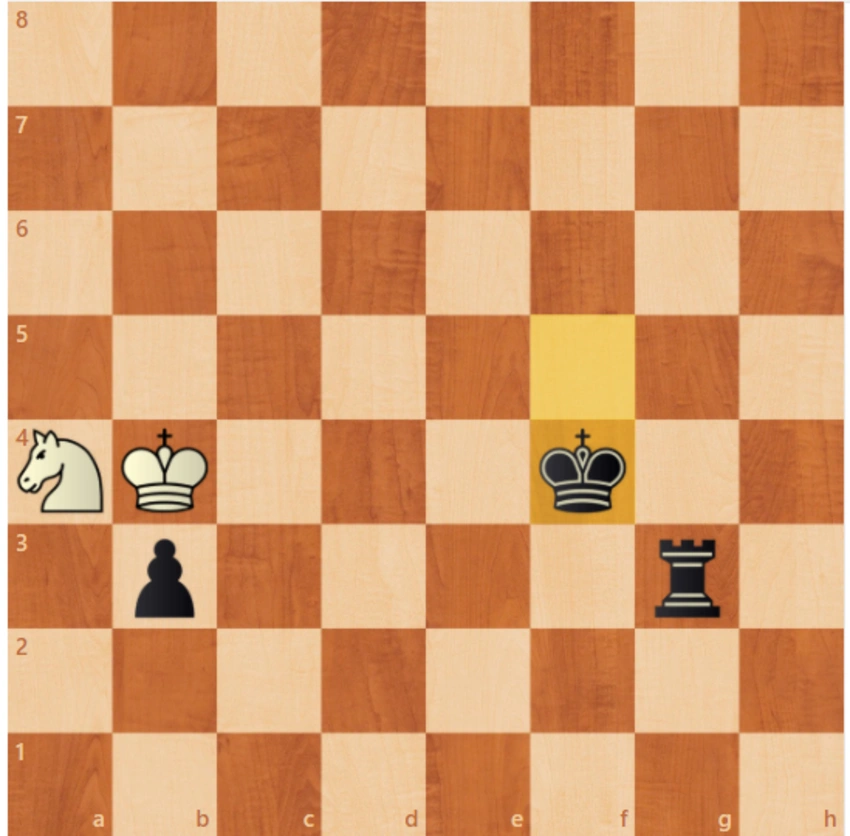
The story goes that, after the game, Edward exclaimed that he didn’t know that a knight could draw against a rook and a pawn! Well, nowadays, every chess master is familiar with this example. Ultimately, the new assumption that emerged from this game is that a rook and a pawn will win against a knight in most cases, but even in this winning position, one should be aware of the knight’s ability to fortress and defend.
Today, it is not easy to make discoveries that revolutionize our understanding of chess because the game has already evolved so much. Every once in a while, though, players uncover some novel ideas that challenge our assumptions.
One such idea that captured our attention this past week was when the world number 2 player, Fabiano Caruana, entered into a rare line of King’s Indian defense and voluntarily gave up 2 bishops for 2 knights. Generally, 2 bishops are considered an advantage over 2 knights, but in this case, Caruana used dynamic factors to neutralize the bishops, resulting in the opponent’s white square bishop not having an opportunity to actively participate in the game.
Judging by his facial expression in this tweet, though, it seems that Wojtaszek was not aware of this idea...
Radosław Wojtaszek's reaction to Fabiano Caruana's 13...Bxc3. https://t.co/9pRy7Szct3 pic.twitter.com/A7S5YFqtPR
— Olimpiu G. Urcan (@olimpiuurcan) January 26, 2021
However, Caruana is not the first person to employ this unconventional strategy. An identical idea happened in the blitz game shown below, although the result was in White’s favor:
Gubsky, Egor (2339) vs. Antipov, Mikhail Al (2567)
1-0 RUS-ch blitz Sochi 17 Oct 2019 Round: 8 ECO: E94
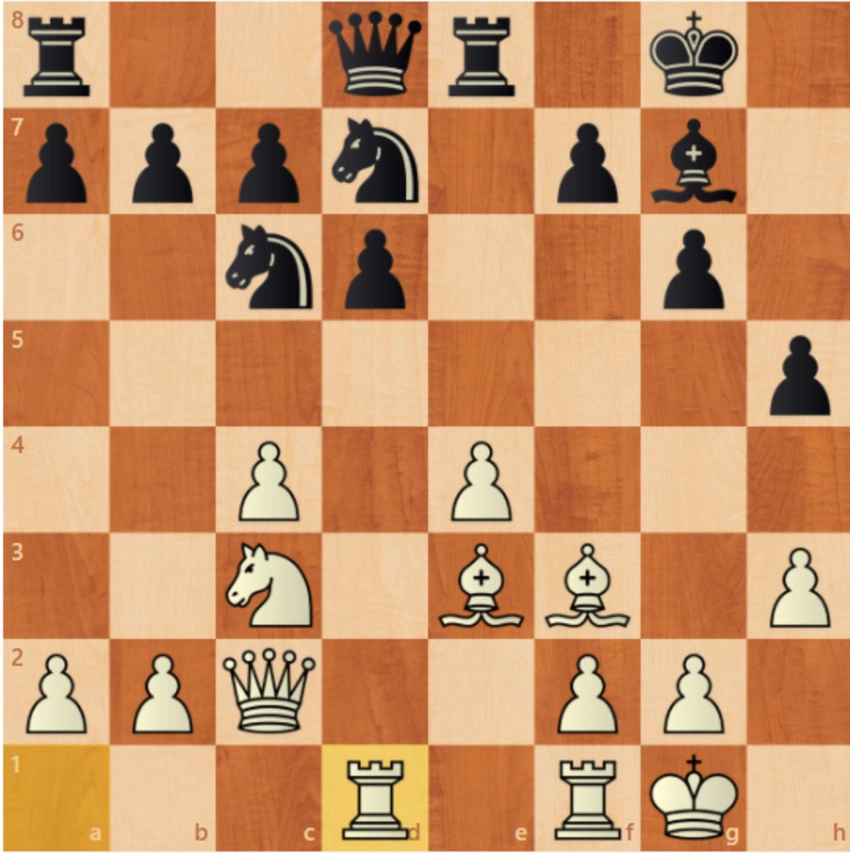
Game of the Week is Radoslaw Wojtaszek vs. Fabiano Caruana
Before diving into the analysis, try to solve this critical position from the game:
(White to move)
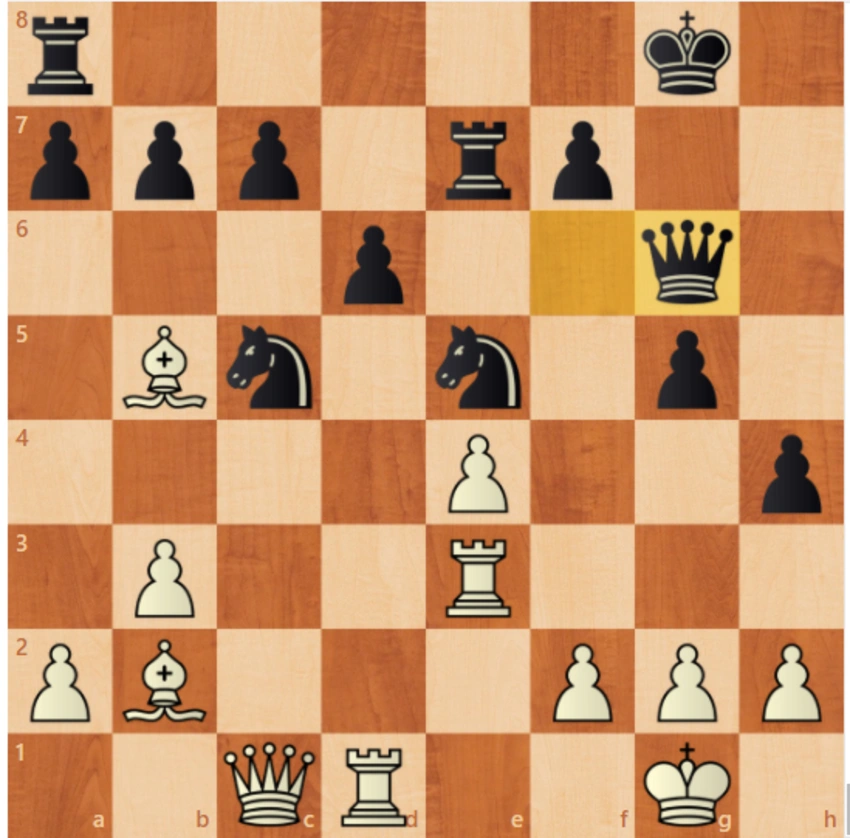
Analysis of the game:
(9) Wojtaszek,Radoslaw (2705) - Caruana,Fabiano (2823) [E94]
83rd Tata Steel Masters 2021 (9.4), 26.01.2021
[Durarbayli,Vasif]
1.c4 [Invitation to play English opening, which is Carauna's mainline against 1.c4.]
1...Af6 [On the other hand, Wojtaszek's main weapon is 1.d4 and I would assume Caruana had prepared King's Indian against that anyway. Therefore, he directly went to that variation.The position transforms to King's Indian and White cannot really avoid this opening.]
2.Af3 d6 3.d4 g6 4.Ac3 Fg7 5.e4 0–0 6.Fe2 e5 7.0–0 Fg4 [A rare continuation.Only GM Skoberne played this move regularly although without success.]
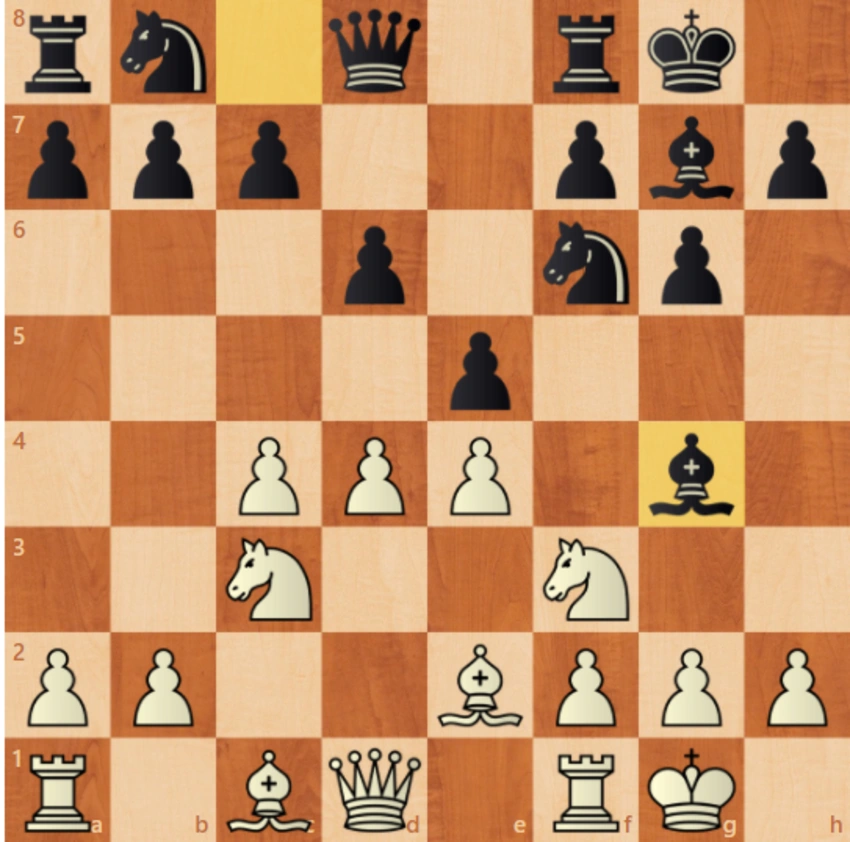
8.Fe3 [Wojtaszek decided to avoid the most principal continuation after 5 minutes of thought. He did not want to see what Caruana prepared in the principal complicated line. In this way, he “dodged the rain but entered into a downpour instead".]
[8.d5 There are not many top games in this position. The position is fresh and requires further practice; however, I could not find an easy way to equalize it during my short analysis. 8...Ah5 Skoberne played this move in all 3 games that he played in this position. (8...a5 Typical move. Stops b4 so that the knight can land on c5 safely. 9.Fe3 Aa6 10.a3 (10.Ad2 Fxe2 (10...Fd7?! 11.a3 h5 12.h3 b6 13.Tb1 Ah7 14.Vc2 Ff6 15.b4 Fg5 16.Vd3 Fxe3 17.Vxe3 1–0 (43) Lysyj,I (2605)-Demchenko,A (2621) Khanty-Mansiysk RUS 2020) 11.Vxe2 Ad7 12.a3 f5 13.f3 Vh4 Complicated position. White lost all 3 games here.) 10...Ad7 11.h3 Fxf3 12.Fxf3 f5 13.Tb1 Vh4 14.b4 axb4 15.axb4 f4 16.Fd2 White is in a better position due to the advancement on the queenside.1–0 (46) Gligoric,S-Bertok,M Sarajevo 1951) 9.Ae1 (9.Fg5 Ff6 (9...f6? 10.Fe3 Af4 11.Fxf4 exf4 12.Ad4 Fd7 13.Vd2 f5 14.exf5 Fxd4 15.Vxd4 Txf5 16.c5+– White has a huge advantage because of the undeveloped queenside and a weak king. 1–0 (37) Wagner,D (2543)-Skoberne,J (2555) Austria 2017) 10.Fxf6 Vxf6 11.g3 Fh3 12.Te1 a5 13.Vd2 Aa6= 1–0 (33) Fridman,D (2637)-Skoberne,J (2563) Batumi 2018) 9...Fxe2 10.Vxe2 Af4 11.Vd1 a5 12.Fe3 Aa6 13.a3!?N (13.Ad3?! Axd3 14.Vxd3 f5= ½–½ (37) Sumets,A (2568)-Skoberne,J (2553) Nova Gorica 2018) 13...Vd7 14.Tb1 Ac5 15.Fxc5 dxc5 16.g3 Ah3+ 17.Şg2 b6 18.Ad3 White's position is preferable.]
8...Fxf3! [This move leaves the bishop on the awkward f3 square where it has to defend the e4 pawn. Moreover, Black gains some tempos for its development.]
9.Fxf3 exd4 10.Fxd4 Ac6 11.Fe3 Te8 12.Vd2 [12.Vc2 h5 13.h3 Ad7 14.Tad1 Fxc3! 15.Vxc3 Vf6 Almost identical position to the game. 1–0 (64) Gubsky,E (2339)-Antipov,M (2567) Sochi 2019; 12.Vc1!?N An interesting attempt to stop Black's idea. 12...Ad7 13.Fg5 Vb8! Black wants to play a6 and b5. (13...Ff6 14.Fxf6 Vxf6 15.Vd2 Now Black cannot build up pressure on e4. I prefer White's position.) 14.Tb1!? Idea is to push b4 in some variations. (14.g3 Ad4 (14...Ade5 15.Fg2 Axc4 16.Ad5 Ab6 17.Af6+ Fxf6 18.Fxf6 White is better.) 15.Fg2 a6 16.Şh1 b5 17.cxb5 axb5 18.Ad5 Ta7 Complicated position.) 14...Ad4 15.Fd1 a6 16.Fe3 b5 17.cxb5 axb5 18.b4 c6 19.Vd2 Va7 Complicated position.]
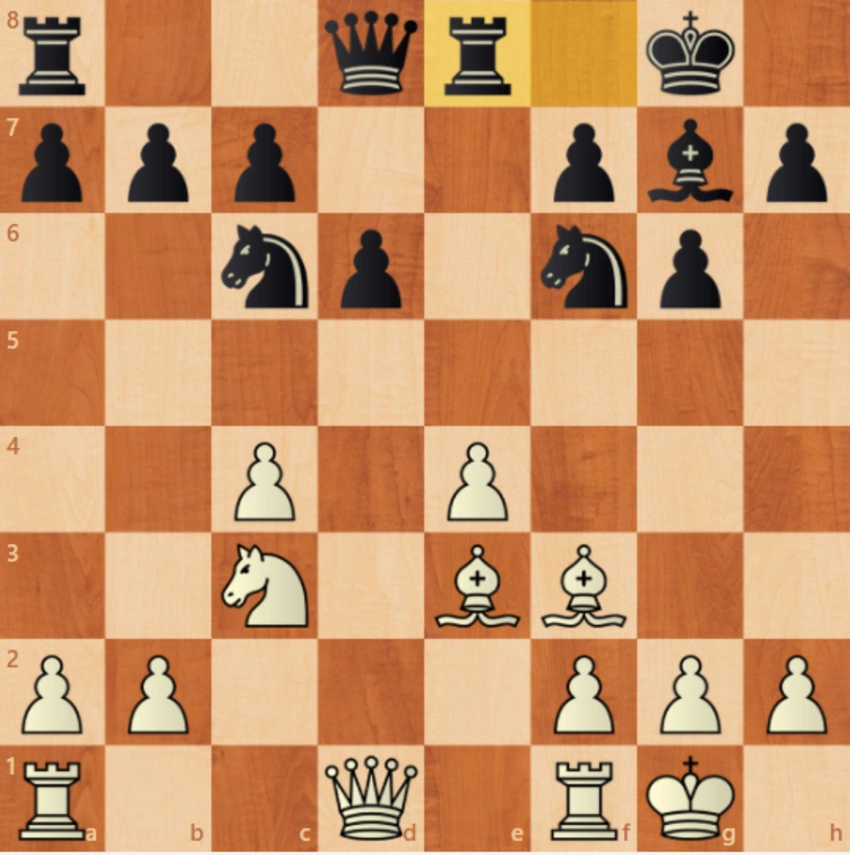
12...Ad7 13.Tad1 Fxc3!N [13...Ac5 14.g3!N If White puts pawn on f3 and defends e4, the position is favorable for him. (14.Tfe1 a5 15.b3 Fxc3! White does not have Qb3 move. Also, h4 square is not guarded. 16.Vxc3 Axe4 17.Fxe4 Txe4 18.Fh6 Te5 19.Txe5 Axe5 20.f4 Vh4 21.fxe5 Vxh6 22.exd6 cxd6 23.Txd6 Te8 24.h3 Vh4 25.Vd4= ½–½ (25) Sirota,A (2384)-Salceanu,V (2512) ICCF email 2000) 14...Fxc3 15.Vxc3 Axe4 16.Fxe4 Txe4 17.Fh6 f6 Only move. 18.Vb3 Vd7 19.c5+ Şh8 20.Vxb7 Td8 21.cxd6 cxd6 22.Vxd7 Txd7 White has a pleasant position.]
14.Vxc3 Vf6 [Now, White will never be able to play g3 because Bf3 is under attack by Qf6.]
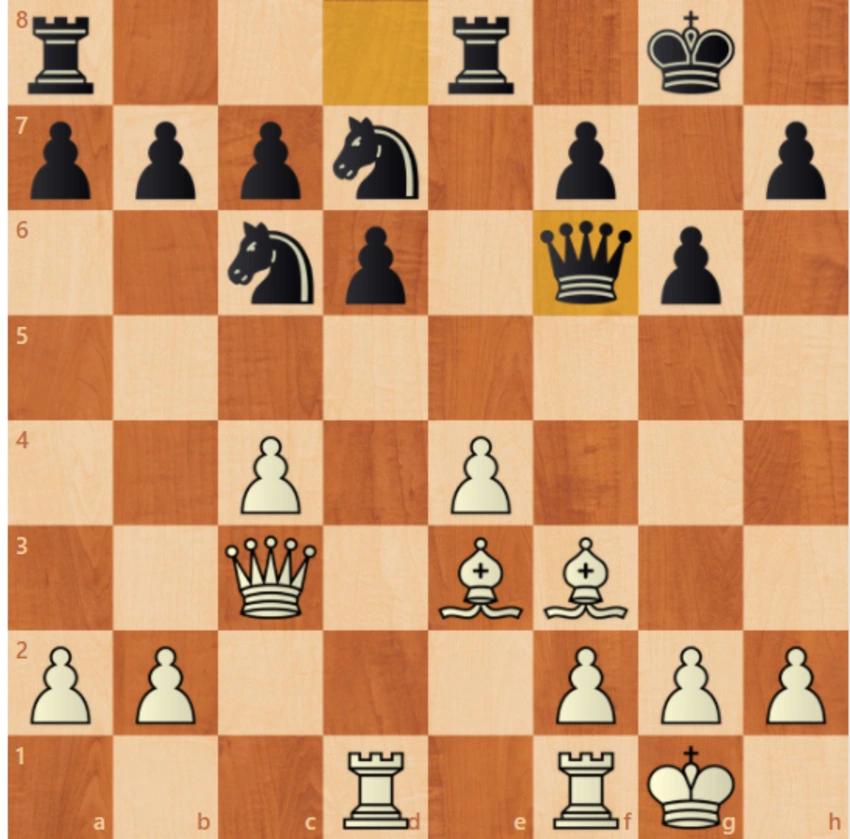
15.Vc1?! [30 minutes.Wojtaszek was trying to create something that the opponent didn't prepare in advance. This is a typical reaction. A player tries to avoid playing "against an engine".]
[15.Vc2 The most natural move. 15...Ac5 16.b3 h5 17.h3 a5 18.a3 In order to win the e4 pawn, Black needs to double rooks on the e file. White's counterplay against that is based on b4 and e5 ideas. Here are example variations. 18...Te6 (18...Te7 19.b4 axb4 20.axb4 Axb4 21.Vd2 Ac6 22.Fg5 Ve6 23.Fxe7 Vxe7 24.Ta1 Close to equality.) 19.e5 Txe5 (19...Axe5 20.Fd5 Te7 21.b4 axb4 22.axb4 White has the advantage.) 20.b4 axb4 21.axb4 Axb4 22.Vc3 Ac6 23.Fxc6 bxc6 24.Fd4 Balanced position.]
15...Ac5 16.Vb1 [16.Fg5 A bit paradoxical but White should have sacrificed the central pawn instead of the c4 pawn. The engine thinks that White has compensation for the central pawn. 16...Ve6 17.h3 Ae5 18.Fe2 Axe4 19.Fh4 White wants to push pawns on the king's side and create an attack on the enemy king.]
16...Ve6 17.Tfe1 [17.b3!? Here again, White can sacrifice the e4 pawn. 17...Axe4 18.Tde1 f5 19.Fc1 d5 20.cxd5 Vxd5 21.Vc2 Complicated position.]
17...Vxc4 18.b3 Vc3 19.Fd2 Vf6 20.Fc1 [Black is a pawn up, but it is not easy to utilize the pawn advantage. That is the strength of two bishops. White can give up one of them and enter into a slightly worse but holdable endgame.]
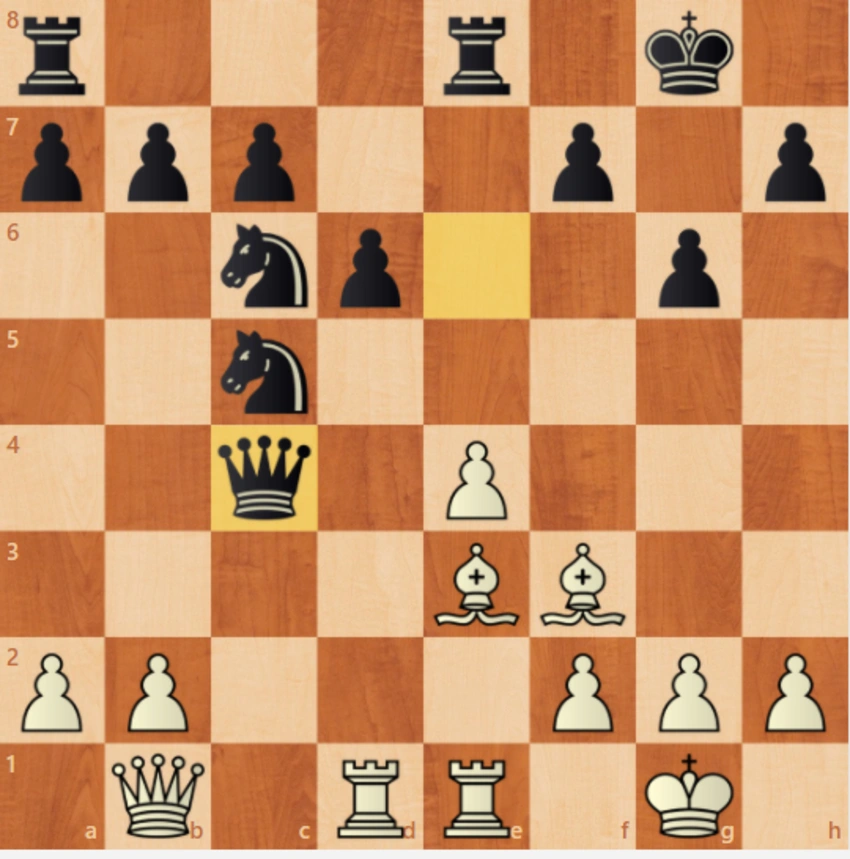
20...h5 21.Fb2 Ae5 22.Fe2 h4 23.Vc1 [Threatening f4.]

23...g5 24.Fb5?! [24.b4! The position demands a dynamic play from White. 24...Ae6 25.Fg4 Threatening Be6 and Qc7. 25...Vf4 (25...Te7 26.Ff5 At least the bishop is now on an active square. 26...Af4 (26...Ag7 27.f4 gxf4 28.Vxf4 With initiative for a sacrificed pawn.) 27.Te3 With g3 idea. 27...Vh6 Stops g3. 28.Vc2 (28.g3?? Af3+ 29.Txf3 Ae2+ 30.Şg2 Axc1–+) 28...Tae8 29.b5 Double-edged position.) 26.Fxe6 Txe6 27.Fxe5 Vxc1 28.Txc1 Txe5 29.Txc7 a5=]
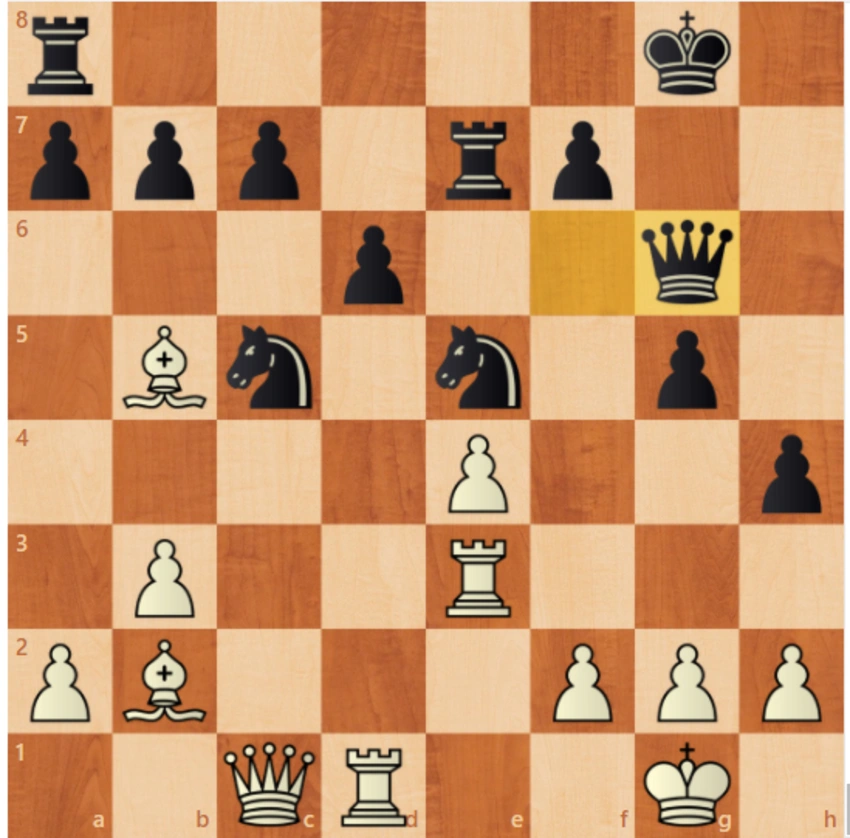
24...Te7 25.Te3 Vg6?! [25...a6! 26.Fe2 Vg6 Now White does not have Bd7 option.]
26.Fe2 [26.Fxe5! It is time to return two bishops. 26...Txe5 27.b4 Ae6 28.Fd7! Vg7 29.Fxe6 fxe6 30.Tc3 Tc8 31.Txd6= Txe4 32.f3 Td4 33.Txe6 Tcd8 34.Te1 Td1 35.Txd1 Txd1+ 36.Vxd1 Vxc3]
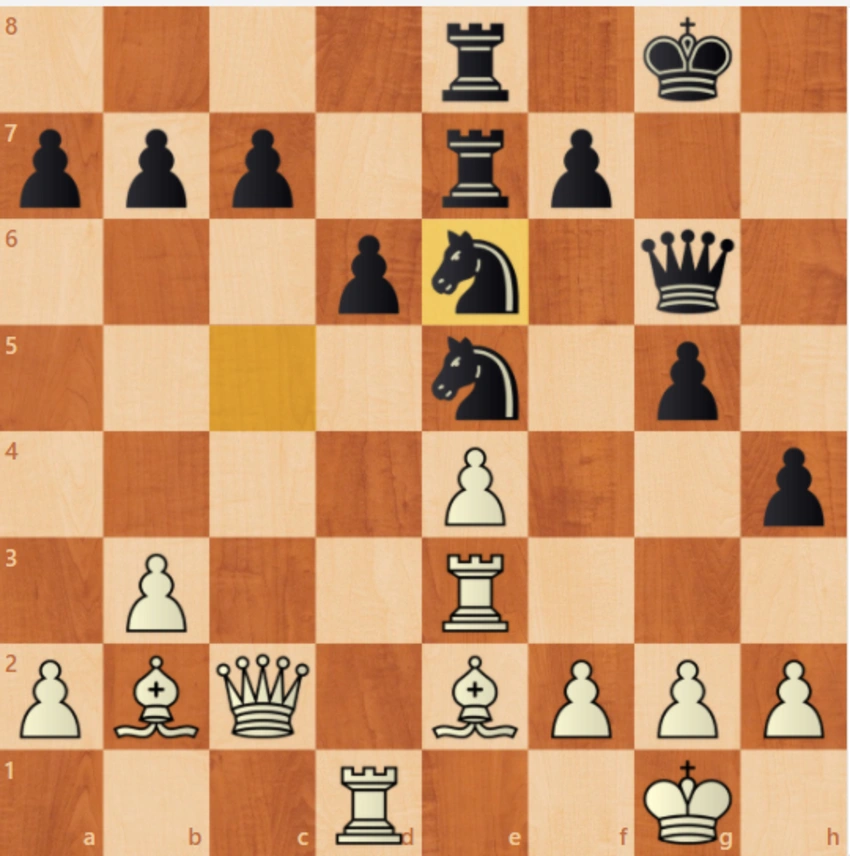
26...Tae8 27.Vc2 Ae6 28.f3? [This is a serious mistake. The position is hopeless after this move.]
[28.h3! Keeps Bg4 option open. 28...Af4 29.Fxe5! dxe5 (29...Txe5 30.Vxc7=; 29...Axe2+ 30.Txe2 dxe5 31.Te3 Heavy pieces endgame with an extra pawn is always closer to draw than win.) 30.Fg4 It is hard for Black to realize the extra pawn.]
28...Af4 [The white square bishop is now passive and the White’s king is in danger. Black has a clear advantage.]
29.Ff1 c6 [Prepares d5.]
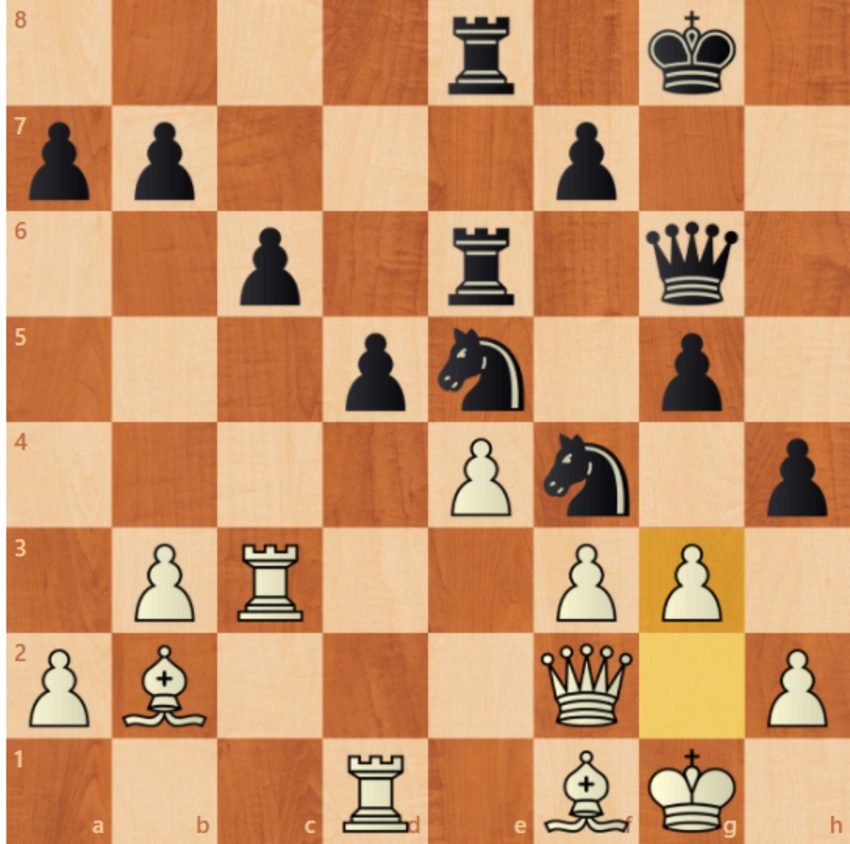
30.Vf2 Te6 31.Tc3 d5! 32.g3 [White decides to take the poisoned knight, but it was hard to find any better strategies for him. He only could have prolonged the struggle with Re3.]
[32.Te3 dxe4 33.Txe4 Vf5 34.Td2 a6 35.b4 Ad5 36.a3 h3–+]
32...hxg3 33.hxg3 dxe4 [33...g4 This move is more precise according to the engine. 34.gxf4 Axf3+ 35.Şg2 Vxe4 36.Vg3 (36.Şg3 Vh7 37.Txf3 gxf3 38.Vxf3 (38.Fd3 f5 39.Tg1 Tg6+ 40.Şxf3 Vh5+ 41.Tg4 Vxg4#) 38...Te3–+) 36...Ad2+ 37.Şg1 Th6 38.Fg2 Ve2 39.Tdc1 Ae4 40.Fxe4 Vxe4 41.Vg2 Vd4+ 42.Vf2 Th1+ 43.Şxh1 Vxf2–+]
34.gxf4 [34.fxe4 Does not lose immediately. Realistically, it is only a matter of time. 34...Ah5]
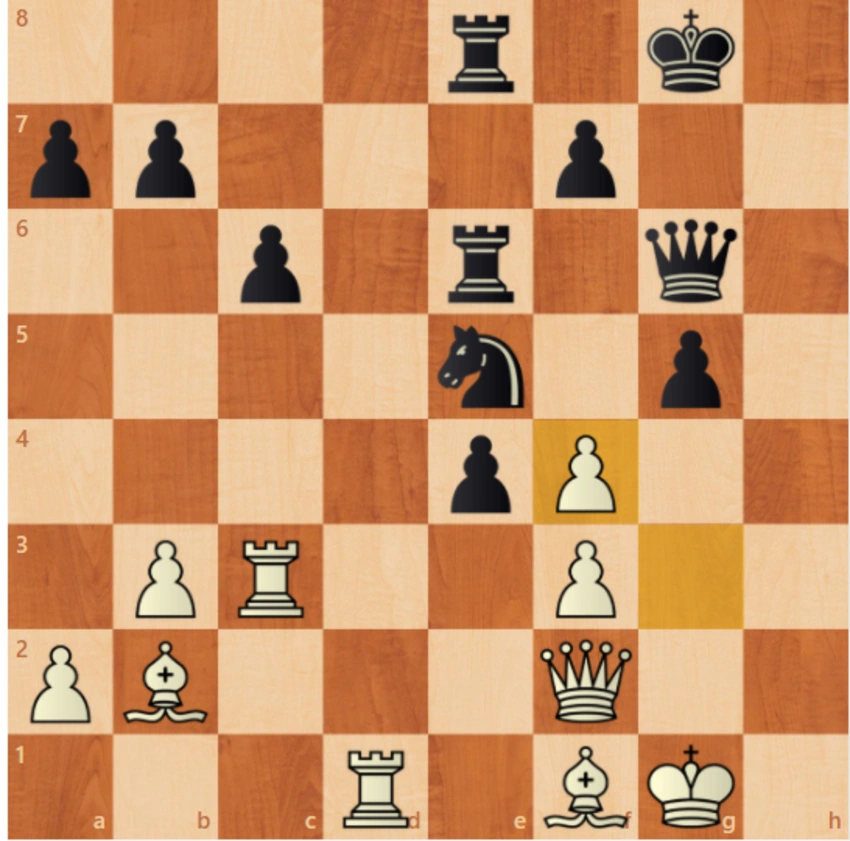
34...gxf4+! 35.Vg2 exf3 36.Vxg6+ Txg6+ 37.Şh1 [37.Şf2 Tg3!–+ No escape from Ng4.]
37...f2 38.Fh3 Ac4! 39.Txc4 Te1+–+
0–1
